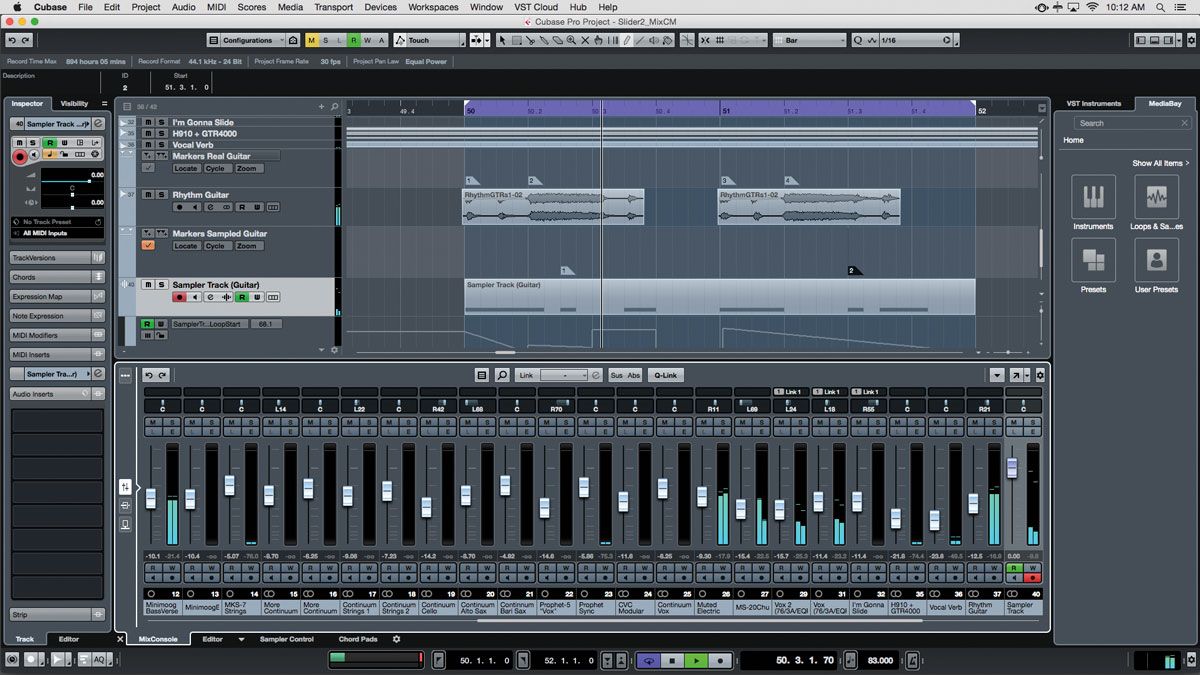
- #Cubase 9 pro review update#
- #Cubase 9 pro review upgrade#
- #Cubase 9 pro review full#
- #Cubase 9 pro review windows#
I find it slightly odd Steinberg decided to move this to the opposite side of the window from where it was previously located - the visibility buttons have been on the left-hand side of the window for nearly 15 years - but there we are.

The Right section provides a new home for the Setup Window Layout button, where you can specify what parts of the user interface are displayed in the Project window from a pop-up. The left section contains the Project History buttons for undo and redo, which I’m sure I will never click, and, inexplicably and optionally, the Constrain Delay Compensation button. The toolbar is now split into three sections, with new left and right sections (justified left and right accordingly) joining the original toolbar controls. It’s basically the same Project window as before, but with a few immediately apparent changes: the core toolbar functionality is now centred rather than left-aligned, and a new Transport Zone (the same height as the toolbar) has been added to the lowest part of the window. RezoningĪfter installing and launching Cubase 9, I felt a little discombobulated when the Project window appeared for the first time. This is in keeping with the icon for Steinberg’s recently released Dorico scoring application, and actually stands out a little better on my cluttered desktop. The familiar diamond and circle on a transparent background is now a less tinted red on a white background, with app-like rounded corners. The first major change to note is that Steinberg have redesigned the Cubase icon.
#Cubase 9 pro review full#
For a full comparison of what features are available in the different flavours of Cubase, including the Elements version, refer to Steinberg’s web site. To make things easy, I’ll refer simply to Cubase 9 when discussing matters applicable to both Pro and Artist, and state Cubase Pro 9 when describing features only available in this version.

#Cubase 9 pro review upgrade#
Either way, this will be a welcome step for Artist users, who no longer have to wait for the upgrade to become available after the Pro release. Given that the installer is the same for Pro and Artist, I assume they might now just be the same application, with the licence on your Steinberg Key dictating whether the Pro or Artist functionality should be enabled. And, for the first time, new versions of Cubase Pro and Cubase Artist were released simultaneously, along with the entry-level Cubase Elements. Released on December 7th, Cubase 9 introduces new ways of working, new tools and many improvements.
#Cubase 9 pro review update#
With its 64-bit software structure, Cubase Pro 9 is even more stable than ever and allows the software to take advantage of your computer’s full power.The latest update to Cubase sees Steinberg’s DAW embrace single-window working and integrated sampling.įor the fourth year in a row, Steinberg have delivered a major update to Cubase. In addition to Cubase Pro 9, Steinberg also makes Cubase Artist 9, a streamlined version of Cubase aimed at songwriters and artists, along with Cubase Elements 9, an introduction to the software. MixConsole History allows you to A/B any stage of the mix process and keep detailed records of your mixes. Perhaps our favorite new features is MixConsole History, which allows you to track all the changes made in the MixConsole and use one click to recall any stage of the mix process. Other additions include a brand new Frequency EQ, cloud collaboration, newly designed plugins, production groove loops, and multiple marker tracks, which allow you to use different markers for individual instruments.

#Cubase 9 pro review windows#
What’s New: Cubase 9 is jam packed with so many features there’s no way we can cover them all in our review, so we’ll highlight our favorites! One of the biggest additions to Cubase 9 is “Zoning”, which allows users to access the mix window, editors and tool windows in the “lower zone” of the screen, allowing you to make edits and mix without leaving the arrange screen.


 0 kommentar(er)
0 kommentar(er)
